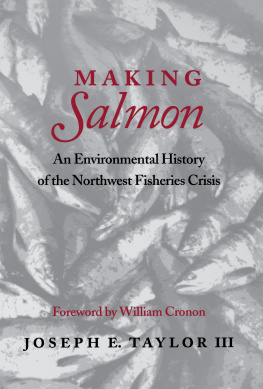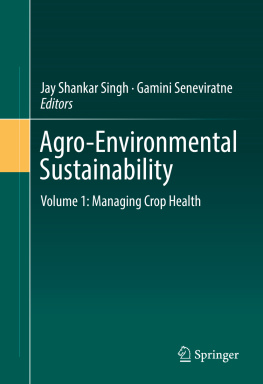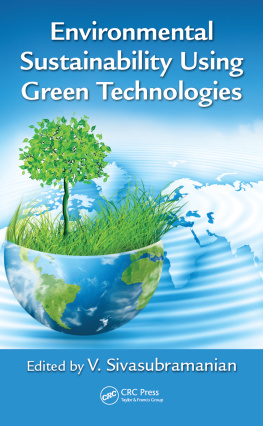Pictorial Presentation of Environmental Degradation and Dryland Agro-Technologies in Northwest China
Published by BookPublishingWorld in 2016
Copyright 2016 Elijah K. Biamah, Michael K. Biamah
All rights reserved. No part of this publication may be reproduced, stored in a retrieval system, or transmitted in any form or by any means, electronic, mechanical, photocopy, recording or otherwise, without prior written permission of the copyright owner. Nor can it be circulated in any form of binding or cover other than that in which it is published and without similar condition including this condition being imposed on a subsequent purchaser
BookPublishingWorld is an imprint of Dolman Scott Ltd
ISBN:
PoD: 978-1-911412-20-5
eBook Apple: 978-1-911412-21-2
eBook Kindle: 978-1-911412-22-9
Dolman Scott Ltd
www.dolmanscott.co.uk
Dedication
This book is dedicated to all communities living in Northwest China whose livelihoods were transformed through the adoption of appropriate dryland agro-technologies introduced through programs/projects supported by the Government of the Peoples Republic of China and International Development Partners like the World Bank, United Nations Development Program and the Food and Agriculture Organization of the United Nations.
Acknowledgements
The preparation of this book is the outcome of of about three years of consultancy studies undertaken by the author on development projects in Northwest China supported by the Government of the Peoples Republic of China, World Bank, UNDP and FAO. It is based on research demonstration and extension of dryland agrotechnologies in the Region.
The authors would like to thank most sincerely all Organizations, Institutions and Individuals who contributed in one way or another to the information contained herein.
Specific thanks go to two United Nations Organizations (UNDP and FAQ), and Chinese Academic and Research Institutions in Northwest China namely: NWAU, NWISWC, SAAS, GAAS, QAAF and NAAF. Other thanks go to the professors, local research scientists, technicians and farmers for sharing their invaluable experiences on dryland farming in Northwest China.
Lastly, the authors would like to register their profound gratitude to all those research scientists who contributed to this publication; University of Nairobi for providing time to undertake this task of documentation; and to Collins K. Maritim and Stephen K. Biamah for preparing the illustrative material.
Prof. Elijah K. Biamah &
Eng. Michael K. Biamah
Acronyms and Abbreviations
| UNDP | United Nations Development Programme. |
| FAO | Food and Agricultural Organization of the United Nations. |
| NWAU | Northwest Agricultural University. |
| GAAS | Gansu Academy of Agricultural Sciences. |
| OAAF | Qinghai Academy of Agriculture and Forestry. |
| NAAF | Ningxia Academy of Agriculture and Fortestry. |
| NWISWC | Northwest Institute of Soil and Water Conservation. |
| UNESCO | United Nations Educational, Scientific and Cultural Organization. |
| IRTCES | International Research and Training Centre on Erosion and Sedimentation. |
| MoWR | Ministry of Water Resources. |
| WUE | Water Use Efficiency. |
| MU | Chinese unit of area measurement. 1 mu = 1/15 ha. |
| MO | Chinese tillage tool for harrowing land. |
| SOM | Soil Organic Matter. |
| SAAS | Shaanxi Academy of Agricultural Sciences. |
| WSA | Water Stable Aggregates. |
| MCECS | Mizhi Comprehensive Erosion Control Station, Shaanxi Province. |
| GU DI | Chinese word for dam land. |
| ZHANG DI | Chinese word for palm land. |
| MAO | Chinese word for small table land. |
| YUAN | Chinese word for large table land. |
| LIANG | Chinese word for sloping land. |
| SHUI JIAO | Chinese word for water tank. |
| ASOCON | Asea Soil Conservation Network. |
Foreword
This publication does provide valuable information on the status of environmental degradation and dryland agro-technologies in Northwest China. It is based on firsthand information obtained through consultations/discussions (undertaken by the first author) with local scientists, technicians and farmers; and field visits to the Northwest Agricultural University, Yangling, Shaanxi Province and to four Experimental Stations in Shaanxi, Gansu, Qinghai Provices and Ningxia Autonomous Region. In the field visits, the first author, visited four Experimental Stations namely: Ledou, Qinghai Province; Dingxi, Gansu Province; and Guyuan and Longde, Ningxia Autonomous Region. In these field visits, the author held some discussions with local scientists, technicians and farmers. All these Stations had made some significant progress in the demonstration and extension of soil and water management techniques to farmers. There was some unique and innovative demonstration on integrated and ecologically sustainable agriculture observed. This concept had picked up very well in some of the stations visited. As of the time of this visit, there were major accomplishments in these Stations in the areas of training of farmers (including women), demonstration and extension of various farming system technologies (e.g plastic film mulching; water saving irrigation using shui jiaos; stone or gravel mulching; greenhouse production of vegetables; and furrow and ridge cultivation of vegetables). There was some very strong involvement of women farmers in farmingt activities particularly in Qinghai and Gansu Provinces. In Qinghai Province, for instance, besides having women research scientists, a significant proportion of those trained by the frontline extension staff included women. This was a very impressive effort by this Province despite the fact that it had a strong Muslim Community. In Gansu, women involvement in farming activities were also evident and there was a lady from Beijing who was conducting a survey on women participation in farming activities. Perhaps, it is worth noting here that this Province had done very well in all aspects of development project activities namely: research, demonstration and extension of integrated farming system technologies.
In the field, it was very evident from the ongoing farming activities that some good aspects of dryland agriculture had been extended to the farmers. This was exemplified by the very good husbandry in the areas; and increased crop yields and incomes of farmers. The credit for this went to all those scientists and technicians that had all along worked so hard to realize development projects objectives. During the visits, the author was privileged to visit Dingxi County for the second time and was overwhelmed by the accomplishments made in a period of two years. This was a clear manifestation of the fast rate of development within the entire Northwest China Region. The same trend was observed in the other Stations visited namely: Heyang, Cheng Cheng and Qianxian. It was envisaged that in the development projects period some significant impact of local capacity building throught training (fellowships, study tours and farmers training) would be realized.








